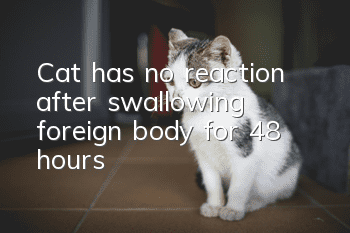Analysis and statistics on the causes of abnormal urination in cats!

As domestic pets, cats are highly independent and easy to take care of. In recent years, more and more cats have been kept. While domestic cats bring happiness to people, their abnormal urination behavior is also increasingly displayed, causing great trouble to their owners. For us pet doctors, there are many factors that cause abnormal urination in cats. In addition to pathological factors, urination caused by abnormal behavior is increasingly confirmed, which also brings great challenges to our doctors' clear diagnosis.
1. Abnormal urination
Changes in the frequency, urgency, quantity, location, etc. of urination in animals can be called abnormal urination.
1.1Cause
The causes of abnormal urination are usually divided into urinary tract pathological factors and non-urinary tract pathological factors. Among urinary tract pathological factors, common causes include urinary stones, urinary tract infection, spontaneous cystitis, urinary tract tumors, ureteral abnormalities, changes in urethral neuromuscular control, etc. Among non-urinary tract pathological factors, the most important The most common ones are changes in estrus behavior and behavioral abnormalities, such as psychological diseases.
1.2 Clinical symptoms
Sick animals usually show two types of symptoms: one is painful urination, such as frequent urination, urgent and painful urination, hematuria, dripping urine, anuria, restlessness, spontaneous cystitis, urinary tract bacterial infection, urinary stones, and urinary tract tumors. The other type is a state of no obvious pain during urination, which only shows a change in the place of urination, but the urine volume, urine color and urgency of urination are all symptoms, or some animals may have urinary incontinence or urinary retention. , while estrus, abnormal behavior, spontaneous cystitis, ureteral ectopia, and changes in neuromuscular control did not cause symptoms of painful urination.
1.3 Diagnosis In cases of abnormal urination, the cause of abnormal urination can be determined through B-ultrasound examination, X-ray photography, urinalysis, hematological examination and complete neurological examination. In addition, some special examinations, such as urography, may be needed to determine special diseases such as ureteral ectopy.
Based on the relevant information from consultation and laboratory tests, the causes that can be relatively clearly diagnosed include urinary stones, urinary tract bacterial infection, estrus, tumors and ureteral ectopia; however, some spontaneous cystitis, behavioral abnormalities, and neurological dysfunction are not so easy to diagnose. Get a clear diagnosis.
2. Disease Statistics
The author counted 95 cases of cats that came to our hospital for abnormal urination in the past 4 years from 2009 to 2013. According to the analysis model of Kanger et al., the etiology, gender and prognosis were analyzed in Table 1.
In the above statistics, we found that urinary stones and spontaneous cystitis are the main causes, accounting for 53% (40/95) and 37% (28/95) respectively. However, no cases due to ureteral cystitis have been found.Cases of tube anomalies and altered urethral neuromuscular control may be related to inadequate examination techniques. Among all statistical cases, except for one case of urethral tumor, the prognosis of the rest is relatively good, and the cure rate is greater than 80%. In the above table, the incidence rate of male animals is 71% (67/95), while the proportion of female animals is 29% (28/95).
Table 1: Statistics of abnormal urination cases
3. Discussion
In the statistical results, we found that the incidence of male animals was significantly higher than that of female animals, which may be related to the urethra structure of male cats. Male cats have longer and smaller urethras than females, making them more susceptible to urethral obstruction. In addition, in some cases, cats continue to lick the penis, causing mucosal damage and bleeding, which can also aggravate the clinical symptoms of abnormal urination. Therefore, urinary tract infections, obstructions, inflammation and other forms of disease are more common in cats.
In the four statistical reports by Kruger et al., the highest proportion of cats with spontaneous episodic inflammation in abnormal urination cases is about 55% - 69%, followed by urolithiasis, which is about 13% - 28% Statistics from our hospital show that feline urolithiasis accounts for about 53% of the cases, and spontaneous cystitis accounts for about 37%. Cats with urolithiasis usually have symptoms such as hematuria and urgency and pain when urinating, which are easy for owners to pay attention to. This is probably the reason why cats with urolithiasis account for a high proportion of cases of abnormal urination in our hospital.
There are few reports of diseases caused by estrus in foreign data, which may be related to early sterilization. In the case statistics of our hospital, approximately 18.9% (18/95) of cases with abnormal urination due to estrus. Through disease consultation, we found that a large number of cats have symptoms of non-painful abnormal urination, such as changes in urination location, rather than changes in urine volume and urination status. Therefore, they are valued by animal owners, so they are more meticulous. A medical examination can help diagnose such diseases.
A large amount of consultation information, detailed physical examination and corresponding laboratory tests are required to rule out the existence of other disease factors. Such abnormal behavior in cats usually occurs due to anxiety, depression or even fear, which is generally related to the stimulation of the cat by changes in the environment.
In addition to conventional treatment, the treatment plan for behavioral urination abnormalities may also require tricyclic antidepressants such as amitriptyline, clomipramine, etc. Among the five cats diagnosed with behavioral urination abnormalities in our hospital, mirtazapine was administered orally at a dose of 1 mg/kg, and the owners were asked to improve some behaviors that may cause anxiety and fear in the cats. Four of the cats had no symptoms two weeks after treatment. disappear.
Mirtazapine is a new type of noradrenergic and specific serotonergic antidepressant. Zhu Jianzhong, Wang Jinliang and others reported the therapeutic advantages of mirtazapine in human depression. Mo has betterIt has anti-depressant and anti-anxiety effects, and its side effects are significantly lower than traditional antidepressants, mainly increasing appetite, and it takes effect faster. The use of mirtazapine in the treatment in our hospital has achieved good therapeutic effects, with a cure rate of 80% (4/5).
Abnormal urination due to anuria requires prompt treatment. Among the 40 cats with urolithiasis, 25 showed symptoms of anuria, 17 of them had elevated blood potassium, and even 5 cases had elevated blood potassium above 8.0mm01/1. Among the cases treated, one case developed symptoms such as paralysis of the limbs and mild coma due to hyperkalemia (8.6mm01/1) only 3 minutes after the start of the treatment. Therefore, it is crucial to promptly control crises such as hyperkalemia in cases of anuria.
- What should you do if your cat has a fever? What to do if your cat has a cold or fever!
- How to make a cat vomit hairballs? How to prevent hairball disease
- American Wirehair Cat Training Methods
- What color is a British shorthair cat?
- What is the favorite food of exotic shorthair cats? How much do you know about feeding shorthair cats?
- Is it because the hairless cat has diarrhea because there are worms in its stomach? The poop scraper comes in to take a look!
- How many months do you need to start vaccinations for cats?
- Cat urinary system problems, how to prevent and treat them?
- How to take care of your new Garfield cat?
- There are many benefits of keeping pets, including health, stress relief and happiness



